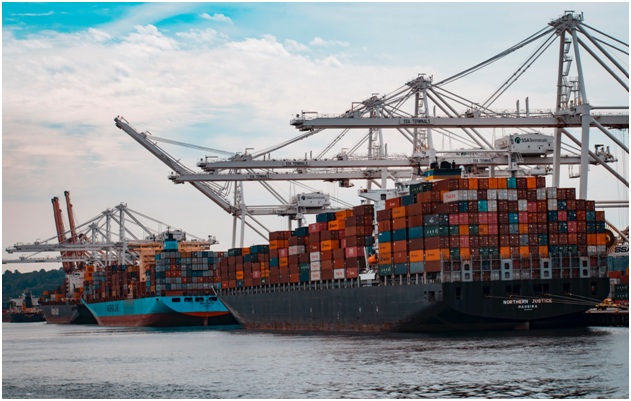The 2020 COVID-19 and its Impact has disrupted global trade like few outbreaks before. There isn’t a country on the planet whose economy isn’t struggling as night trains are canceled and thousands of planes are downed.
Whether it’s the lockdowns or the “stay at home” orders, Australia is facing a similar crisis.COVID-19 and its Impact on the shipping has been hit hard, as supply chains have come under great strain. Luckily, the country’s logistics network is showing recovery and more importantly, of adjusting to the new reality.
Table of Contents
Readiness for spikes in demand
Just like other national tourism industries, Australian tour operators took a huge blow in the form of dramatically decreased demand. However, other industries actually saw a rise in demand during the pandemic.
COVID-19 and its Impact on Food delivery services and companies that sell household goods saw a spike in demand during the lockdown. Panic buying is partially to blame, but anyhow, all these goods need delivery without major infrastructural improvements.
Most shipping companies hired temp staff or they outsourced during the period when both output and demand have increased exponentially. Although shippers were caught slightly off-guard, they now have a network of associates who can handle future sudden spikes in sales.
Keeping an eye open across the sea
One of the biggest unknowns of the crisis is caused by the COVID-19 outbreak is a heavy dependency on foreign trade partners. Furthermore, many shipping companies in Australia and New Zealand rely on third-party contractors from Southeastern Asia, which is near the source of the pandemic.
In most cases, logistics customer service centres are located in the countries of this region. Lockdowns in these countries influence Australian companies, so always keeping an eye open across the sea is a good idea.
Looking for alternatives
When it comes to the supply chain, COVID-19 and its Impact has caused numerous suppliers to either temporarily shut down their businesses or simply stop cooperating with you. That’s why identifying alternative sources of supply should be a priority in this day and age (of the coronavirus).
The best way to counter losing suppliers is to rapidly extend your network. When one supplier struggles to deliver (quite literally), you immediately introduce another. Also, don’t look at the geographical area the alternative supplier operates from, as a supplier from Perth is just as good as the one from Melbourne.
Manage shortage well
We’ve discussed how Australian companies need to respond to spikes in demand but at the same time, they have to manage shortages equally well. Logistics shortages range from the lack of experienced local drivers to the inability to ship non-essential goods through air and sea. The ability to quickly outsource temporary solutions is the key behind successfully responding to the current increase in customers’ demand.
Delivery times are changing
Since the lockdowns are forcing retailers to change their work hours, so should shipping times adjust. At times, you will get a whole extra day to deliver goods, while at other times, the shipment should have been there yesterday.
Your business stands a greater chance of adjusting faster if you own logistics centres across the Australian continent or you team up with other industry players. For example, if a Perth transport company has an office in Sydney, then they are able to serve the entire East Coast.
Rethink your pricing strategy
As more and more people are sent home because of COVID-19, their job posts are under threat of becoming redundant. This means that you can no longer count on a large pool of potential shoppers, so rethinking the pricing strategy is a must.
However, the overall demand for transport is on the rise, as stated above. As you can see, it’s not an easy decision to raise or perhaps lower the average shipping cost. Our advice is to introduce only short-term pricing changes (and let customers know of this), so you can gradually return to normal as the pandemic nears its end.
Now is the time to grow!
Whether they make it official or not, every company has a growth strategy. Ironically enough, but the pandemic is the ideal opportunity to grow your shipping business. The trick is to (re)act fast and unlock your enterprise’s full capacity at speed.
If you are struggling to support growth, team up with other players from the industry to share freight and deliver orders together. You will be the one providing the logistics and your partners will in return open new markets to you, even international ones (that hopefully aren’t under lockdown).
Anyhow, if you are quick to jump at the opportunity to grow rapidly during the pandemic, you will be left novel markets after a vaccine is found.
Strong leadership is important now more than ever
As mentioned earlier, the pandemic presents a great opportunity for the overall growth of the shipping business, which is also aiding medical workers by shipping essential supplies expediently. In terms of profits, now is the time to show off your leadership skills by building industry-based solutions with your present business partners. The biggest innovations concern the supplying chain and the introduction of smart technologies. A business model or an invention that stands the test of a global epidemic is certain to last for decades to come!
Things will never be the same
Just like the 1918 Spanish flu epidemic, the COVID-19 and its Impact will be over after half a decade, at most. However, you should prepare for the longer-term effects of the present disruption in the market. Namely, countless retailers, suppliers, and manufacturers have had to change their business model so much that they have realized they actually like some “temporary measures.”
Take the example of working from home. Hundreds of tech companies from Sydney, Melbourne, Adelaide, etc., have realized that they actually save money if they have staff working from home and the employees are happier. As a consequence, they are more likely to order food online, increasing the workload of the shipping companies.
Few viruses have had such a profound global effect as the 2020 COVID-19 outbreak. Australia was no different, as the shipping industry had to kick it into high gear to keep up with increased demand. The logistics network is now expanding, as businesses are slowly getting acclimatized to the new reality.











